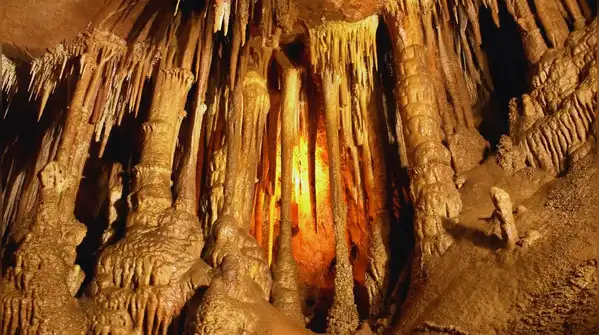Singapore – Across continents, caves have served as natural sanctuaries, cultural repositories, and geological marvels. UNESCO has recognized several of these subterranean wonders as World Heritage Sites, acknowledging their universal value to humanity. From ancient temples carved into rock faces to vast underground river systems, these caves embody both the creativity of nature and the endurance of human civilization.
In North America, the Mammoth Cave National Park in Kentucky, United States, stands as the world’s longest known cave system, stretching over 643 kilometers. Its labyrinthine limestone passages hold geological wonders such as gypsum flowers and cave pearls, as well as archaeological traces of prehistoric human activity.
Not far away, Carlsbad Caverns National Park in New Mexico dazzles visitors with over 119 caves. Among its highlights is the Big Room, one of North America’s largest chambers, adorned with stalactites and stalagmites. Evening bat flights add to the unique natural spectacle.
Asia contributes profoundly to this list, with India alone home to multiple UNESCO cave sites. The Elephanta Caves near Mumbai showcase intricate rock-cut Hindu and Buddhist carvings, including the renowned Trimurti sculpture of Shiva. Meanwhile, the Ajanta Caves in Maharashtra preserve Buddhist art dating back to the 2nd century BCE, while the nearby Ellora Caves represent a harmony of Hindu, Buddhist, and Jain traditions through monumental architecture such as the Kailasa Temple.
Europe’s Škocjan Caves in Slovenia, located on the Kras Plateau, feature one of the largest known underground canyons in the world. Carved by the Reka River, this dramatic system hosts vast chambers and unique ecosystems, making it a vital scientific and cultural site.
Southeast Asia also boasts extraordinary cave heritage. Phong Nha-Ke Bang National Park in Vietnam contains Hang Son Doong, the planet’s largest known cave passage, alongside other immense caverns shaped by underground rivers. Similarly, Malaysia’s Gunung Mulu National Park features the vast Sarawak Chamber and some of the most spectacular limestone formations on Earth.
Further east, China’s Mogao Caves in Gansu Province house a wealth of Buddhist murals and sculptures. Dating back to 366 CE, these 735 caves represent a fusion of Indian, Central Asian, and Chinese influences, offering an unparalleled insight into the Silk Road’s cultural exchanges.
Finally, Africa’s Sterkfontein Caves near Johannesburg, South Africa, stand as part of the Cradle of Humankind. Known for yielding pivotal hominid fossils, they have significantly advanced the study of human evolution and origins.
Together, these ten sites reveal how caves transcend mere geology. They are living archives, chronicling human creativity, spiritual devotion, ecological systems, and evolutionary history. Visiting them is not only an adventure underground but also a journey into the shared heritage of humanity.









